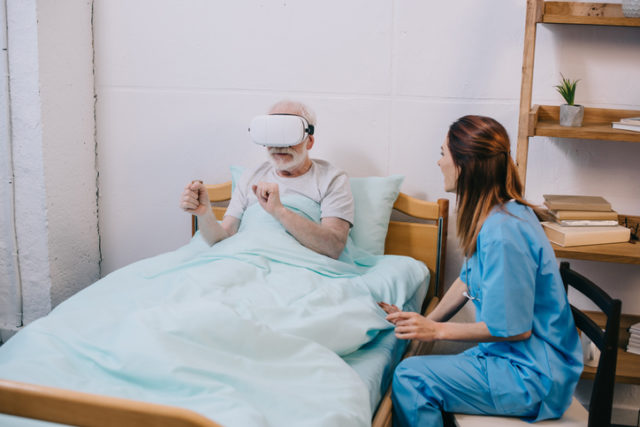
Covid-19 has been an eye-opening experience for most of us. It has made us realize the power of community, the importance of innovation, and the fragility of our lives. We have witnessed several people die alone during the pandemic without their family members or loved ones being beside them due to hospital regulations. Can VR and holograms reduce the emotional burden for families, patients and clinicians in future crises when patients can’t be with their loved ones?
Covid brought about a drastic decrease in healthcare resources, including medical staff, ethicists, and other critical resources to manage the demand and psychological stress of helping the ones in need of treatment. And this is not just for Covid patient but also those admitted to the hospital for other medical reasons. The constant crisis led to deep burnout of our frontline workers.
They experienced significant levels of anxiety, depression, and pure psychological distress as they did their best to take care of Covid patients directly while worrying about their health and spreading the virus to their family members. The lack of ventilators and PPEs increased their stress levels and created a sense of helplessness which led to higher rates of physicians quitting or even committing suicide. They felt increased anxiety about taking on new clinical roles and expanding their work to support their colleagues, and above all, they had less support and access to mental health services to manage their anxiety, depression and psychological distress.
ICU physicians faced a tough time especially. Dr. Lakshman Swamy, a pulmonary and critical care physician at Cambridge Health Alliance and an instructor in medicine at Harvard Medical School, wrote an article in the Washington Post where he expressed how ICU physicians tried hard to bridge the emotional, digital gaps and went above and beyond to bring in compassion and keep patients alive.
Isolated death
One of the most troubling and wrenching issues during the pandemic was to watch people die alone with no family around them. The fear of being isolated in a hospital also had the negative impact of people choosing to delay care. This predicament only exacerbated the seriousness of their health conditions.
Hospitals, emergency departments, and long-term care facilities were forced to establish visitor protocols to contain the spread. While logical and completely justifiable, the policy’s toll on clinicians, patients and family members was profound.
But what if it doesn’t have to be this way? Can public health policies and the health system take into account new technologies that can allow humanity, empathy to remain during a future health emergency? Can virtual reality bring a modicum of peace to suffering patients? Can holographic technology bring family members right into the room of patients to bring them joy ? Such technologies are by no means a replacement for humans or in-person contact, but perhaps can significantly alleviate isolation during extreme psychological distress.
The role of virtual reality is being studied in palliative care. In fact chronic pain patients have been seen to take less pain medication when they play VR games. What if dying Covid patients could have visited their favorite places using VR?
Imagine also if hologram technology could be leveraged the way NASA did in teleporting a doctor to the International Space Station. Using holograms to bring patients’ loved ones to their rooms can likely have a positive impact on their state of mind, thereby reducing the stress on our physicians like Dr. Swamy. I firmly believe that if we used such technology it could have brought a sense of comfort, empathy, and humanity to our healthcare ecosystem.
We didn’t do it this time around but there’s always a tomorrow.
Photo: LightFieldStudios, Getty Images








